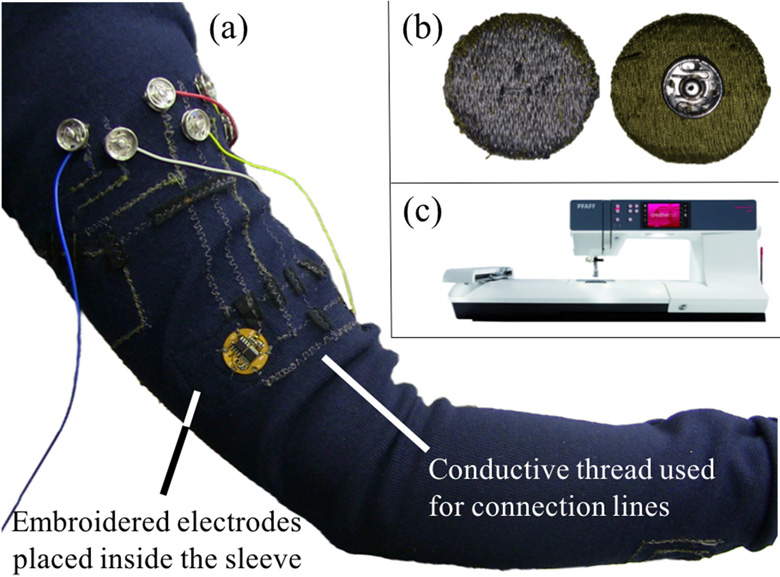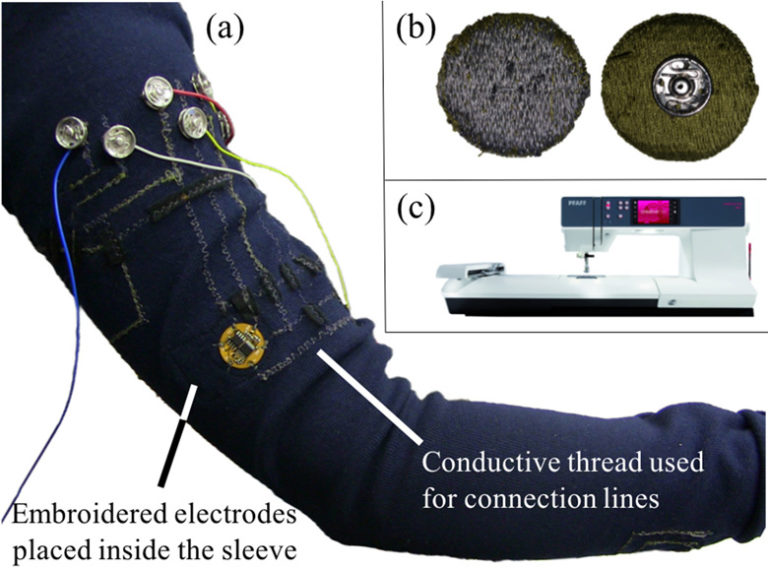
Muscle activity monitoring or Electromyography (EMG) is a useful tool. However, EMG is typically invasive, expensive and difficult to use for untrained users. A possible solution is textile-based surface EMG (sEMG) integrated into clothing as a wearable device. This is, however, challenging due to (i) uncertainties in the electrical properties of conductive threads used for electrodes, (ii) imprecise fabrication technologies (e.g., embroidery, sewing), and (iii) lack of standardization in design variable selection. This paper, for the first time, provides a design guide for such sensors by performing a thorough examination of the effect of design variables on sEMG signal quality. Results show that imprecisions in digital embroidery lead to a trade-off between low electrode impedance and high manufacturing consistency. An optimum set of variables for this trade-off is identified and tested with sEMG during a variable force isometric grip exercise with n=12 participants, compared with conventional gel-based electrodes. Results show that threadbased electrodes provide a similar level of sensitivity to force variation as gel-based electrodes with about 90% correlation to expected linear behavior. As proof of concept, jogging leggings with integrated embroidered sEMG are made and successfully tested for detection of muscle fatigue while running on different surfaces.

